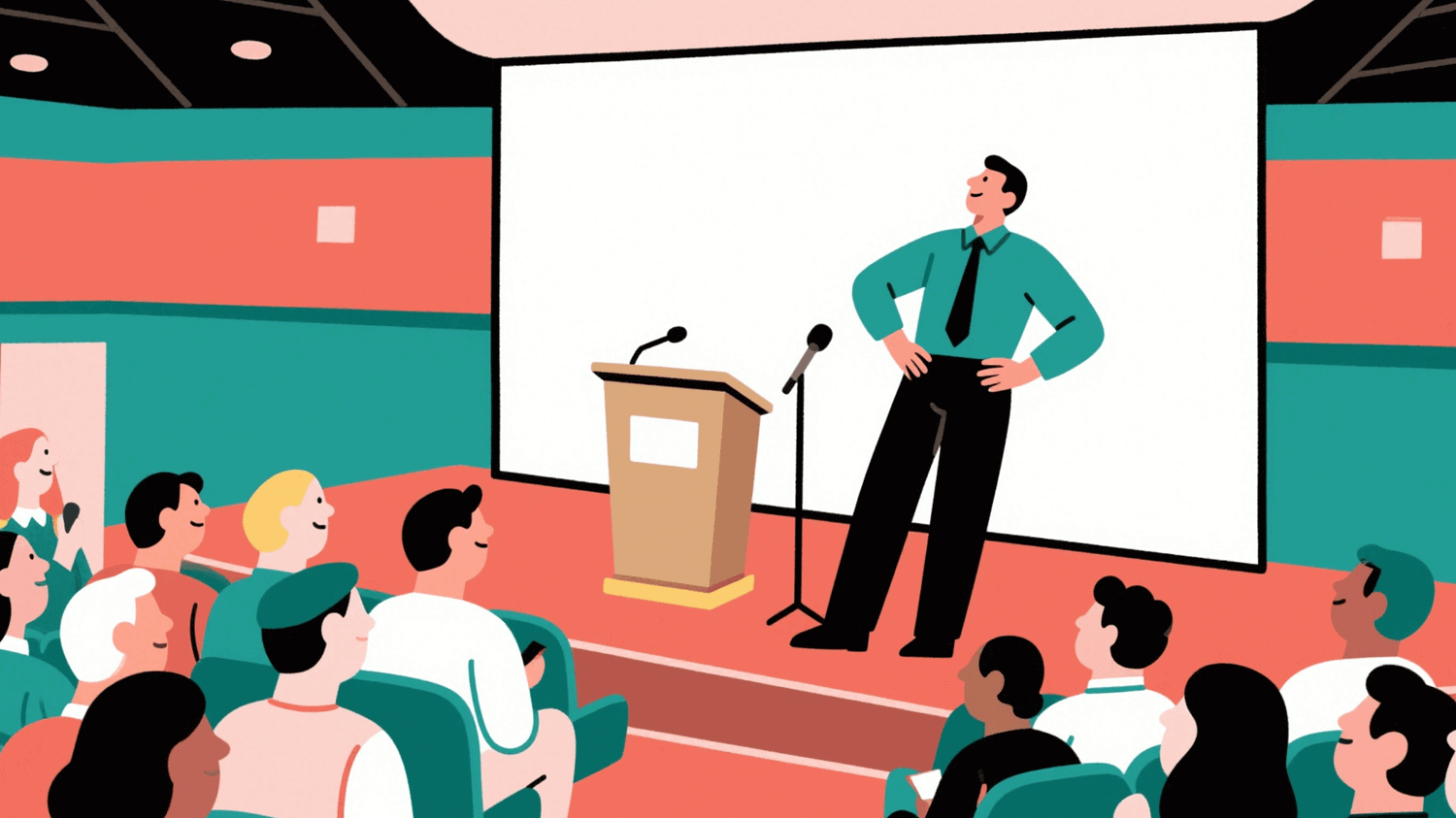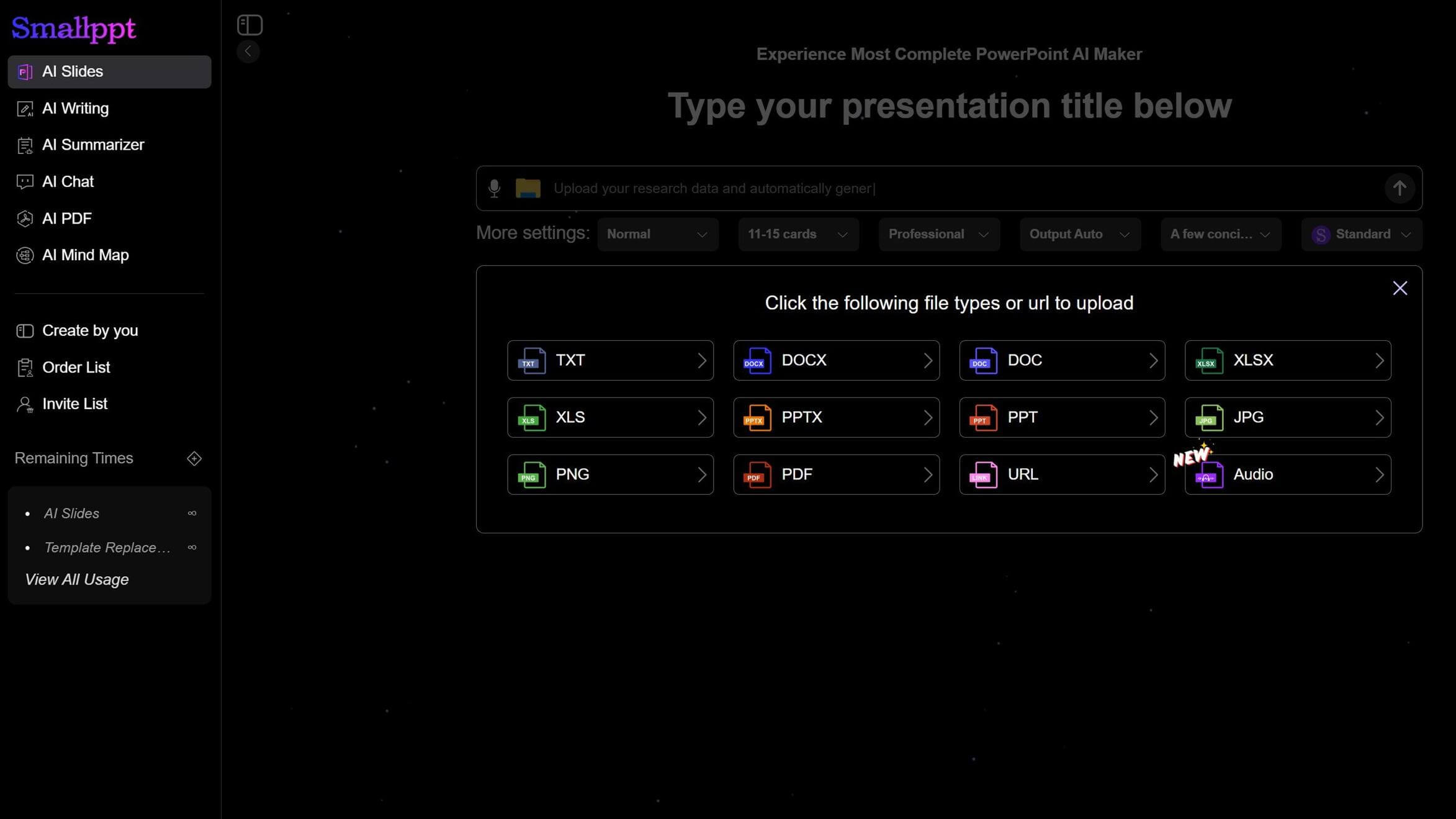
On the stage of public speaking, verbal content is certainly important, but nonverbal body language can convey messages far beyond the words themselves. A successful speech relies not only on powerful and resonant words but is also inseparable from the support of natural and confident body movements.
In this blog post, let's discover together the importance of body language and the application of effective body language in presentation. Mastering them can help us appear more confident and composed when giving a speech.
Why Is Using Body Language Important in Public Speaking?
1. Enhance Expressive Effect
When words fall short in accurately describing emotions or details, body language can fill in the gaps.
Simultaneously, body language adds extra layers and emphasis to verbal expression, making the message clearer, more complete, and more powerful.
2. Increase Speaker Confidence
Some scholars propose that people can enter a specific state through "role assumption."
If a speaker pre-assumes an identity like "an authority" or "a sharer," and mimics that role through body language (such as a steady stride, powerful gestures), the brain gradually accepts this setup, and the speaker genuinely grows more confident in their ability.
3. Facilitate Connection and Communication with the Audience
Expressive body language can capture the audience's attention, keeping them visually engaged with the speaker, enhancing the sense of interaction and closeness between them.
4. Strengthen Persuasiveness
An upright posture, confident eye contact, and purposeful gestures, all of these bodily movements can convey the speaker's self-assurance.
A confident speaker more easily convinces the audience of the reliability and authority of their viewpoints, thereby increasing persuasiveness.

Effective Body Language
| Eye Contact
Scan the entire audience:Make eye contact across the entire audience in a regular pattern. Look at listeners in different areas one after another. This can make everyone feel acknowledged.
Additionally, keep your eye movement natural and not overly deliberate. You can adjust the scanning pattern and frequency based on the key points and rhythm of your speech.
Lock eyes with an individual: Choose a listener and engage in direct eye contact for a few seconds. Throughout your speech, you can connect this way with multiple different listeners.
| Gestures
Different gestures convey different messages. Speakers should coordinate gestures with their words. It is can better capture the audience’s attention and enhance the effectiveness of their speech.
For example:
● Clenched fist: Conveys your determination and fighting spirit.
● Palms open upward: This displays honesty, openness, or invites action. You can also use it to invite or welcome the audience to come on stage, share, or encourage them to follow up with your questions.
● Palms pressed downward: Calms the audience and projects authority, stability, or a signal to end the discussion. It can also steady a restless crowd.
● Pointing: When you need to emphasize a specific object, person, or direction, you can point to the corresponding location with your finger.
● Open arms: Signals a welcome greeting, openness, or receptiveness to new ideas or perspectives.
● Touching your face: Indicates contemplation, hesitation, or uncertainty.
| Movement
Avoid standing rigidly in one spot. You can walk around appropriately, which can enhance the rhythm and appeal of your speech and make the audience more engaged.
Use your starting position as a base. Occasionally move slightly left or right, or even briefly turn your side or back to the audience, in sync with your speech's flow.
| Posture
Strong posture and positioning are the foundation of effective body language. Standing straight with relaxed shoulders and natural poise projects confidence and professionalism, earning listeners' respect and trust.
In formal settings, try not to slouch or lean on the podium, as it may signal disinterest or lack of seriousness about the speech.
| Voice
A monotonous tone or mumbled pronunciation will distract listeners from your message. Therefore, the speaker should adjust the pitch appropriately according to the changes in the content and emotions of the speech.
Speak at a volume loud enough to be easily heard and understood by all.
Unclear articulation muddles your meaning. So, try to project your voice clearly and crisply.
Vary your speaking speed to suit your message. Pause appropriately between sentences, paragraphs, and after key points to give the audience time to think and digest.

Precautions
Be Natural and Unforced
Avoid deliberate imitation or stilted movements.
Don’t add body language to your speech just for the sake of it, as it can come across as artificial.
Gestures, eye contact, and movement should sync naturally with the rhythm of your content.
Mind Cultural Differences
Cultures vary in how they interpret and accept body language. Before speaking, you should understand your audience’s cultural background to avoid gestures that might be misunderstood or offensive.
For example, the "OK" hand sign signals approval in places like China, Europe, and the U.S. But in countries like Brazil and Türkiye, it can be seen as insulting.
Practice First, Then Refine
Rehearse before your actual speech to get comfortable with and fine-tune your body language.
You can record your practice sessions on video and review them afterward. Notice whether your gestures look natural and appropriate, and whether they flow smoothly with your message. Based on your observations, adjust and refine them accordingly to polish your nonverbal delivery.
Create More Engaging Presentations with Smallppt
Tired of struggling with tedious PPT creation? Smallppt leverages AI technology to automatically generate logically structured, visually striking slides tailored to your theme. From content generation to slide design, it handles everything with one click, doubling your efficiency from ideation to polished presentation, helping you shine effortlessly in any setting.
Simply input your presentation topic or upload relevant text, then leave the rest to Smallppt. Free up your time and energy to focus on rehearsing your stage delivery and perfecting your body language techniques.

Mastering impactful and effective body language boosts your confidence on stage of presentation, strengthens message delivery, and creates lasting impressions — just ensure natural usage to avoid distracting your audience.
Use Smallppt to craft compelling slides, amplify your body language, and deliver truly exceptional presentations.


